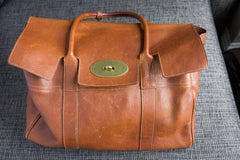Cleaning water stains on leather
Water marks on porous aniline leather are very difficult to remove. Any normal water based leather cleaner will only make the leather even wetter and make the stain worse.
With Geist Aniline Water Stain Remover it is possible to effectively remove water marks from aniline, suede and nubuck leather garments. The advantage of cleaning leather clothing is that, in most cases, the garment can be completely washed. This helps achieving an even result throughout the whole item, rather than focusing on a specific area.
The Aniline Water Stain Remover can be also used for sensitive aniline furniture, aniline bags and aniline shoes. For suede and nubuck shoes, we have the Shoe Cleaner. Of course, always keeping in mind that each piece of leather can react differently to the same treatment. We cannot guarantee full removal of water marks, however, we have achieved excellent results with this method as shown on the photographs below).

When it comes to Suede and Nubuck leather furniture, water marks are hard to remove, in fact, these can rarely be fully cleaned. However, after the treatment, significant improvements can be achieved.
Following the instructions for applying the Aniline Water Stain Remover is very important. You should always test the product first in a hidden area. Wearing gloves, apply the product with a soft cloth from seam to seam ensuring an even application - make sure it is all fully wet. Please do not rub too hard as this might damage the leather. Let it dry slowly or use the cold setting on your hairdryer to speed up the process. This process can be repeated until the mark is no longer visible.
Once the leather has properly dried, it is important to protect it. We recommend using the Aniline Cream to prevent new stains on new leather items. For older leather with a visible patina, the Leather Preserver will be best.
For suede or nubuck furniture, once the area has fully dried, sand the surface with a Leather Sanding Pad and apply Aniline Conditioner Spray and Fabric Protector to protect it from further damage.
Recently a customer brought us a Mulberry Piccadilly handbag in Oak Natural Leather with a water stain covering a big part of the bottom of the bag. She had put a bottle of water inside the bag but the cap wasn’t tightly closed and the water leaked inside the bag creating a very obvious mark on the outside. Mulberry doesn’t line these type of bags to show the leather inside and outside. The Mulberry Piccadilly bag is also left untreated by Mulberry which makes it more susceptive to staining and damages than treated leather bags.
The common recommendation for these type of damages would be to recolour the damaged area or even to recolour the entire bag. However, applying colours or Leather dye should always be used as a last resort when working on aniline leather as the feel and the grip of the leather is lost when colour is applied to it. Hence, our first and preferred method is to treat water marks on aniline leathers with Leather Fixative.
Here is how the bag looked before the treatment when we took it to our workshop.

Step 1 : Fill a bucket with water and the Aniline Water Stain Remover in a ratio 1:10
Step 2 : Dip the entire bag into the solution and wipe stained areas lightly using Leather Cleaning Brush at regular intervals. Leave it in the solution for roughly 1 hour 30 minutes.
Step 3 : Fill another bucket with a Leather Detergent and dilute with water in a ratio 1:8. The concentrate is a liquid detergent that cleans and helps remove dirt. It also contains oils that make sure the leather does not become hard. Leave it in the solution for a couple of hours and keep scrubbing lightly at regular intervals.
Step 4 : After a couple of hours, remove the bag from the solution and keep it in a cool dry place away from sunlight and heat to let it dry. Stuff the bag with an old towel to ensure it doesn't lose its shape and absorbs excess water. During the drying process, spray Aniline Conditioner at regular intervals to achieve a better result. This ensures the bag does not get dry and hard during the drying process and the leather remains soft and supple.
Below is the result after the cleaning process. One very happy customer with a clean bag!






